The Mansion House was the home of the Russell family for almost 200 years. The Russells are descended from a military veteran named Rozel or Russell. He belonged to the family of the Russells of Kingston Lacey, afterwards created Dukes of Bedford.
The Mansion House was the home of the Russell family for almost 200 years. The Russells are descended from a military veteran named Rozel or Russell. He belonged to the family of the Russells of Kingston Lacey, afterwards created Dukes of Bedford.

In 1600 Alexander Russel purchased considerable property in and around Elgin. He later became Provost there. When he died in 1645, his son Patrick inherited and bought the lands of Catholm and part of Montcoffer, Banffshire in 1680. It was Patrick’s grandson, Alexander Russel of Montcoffer, who purchased the Aden estate in 1758.
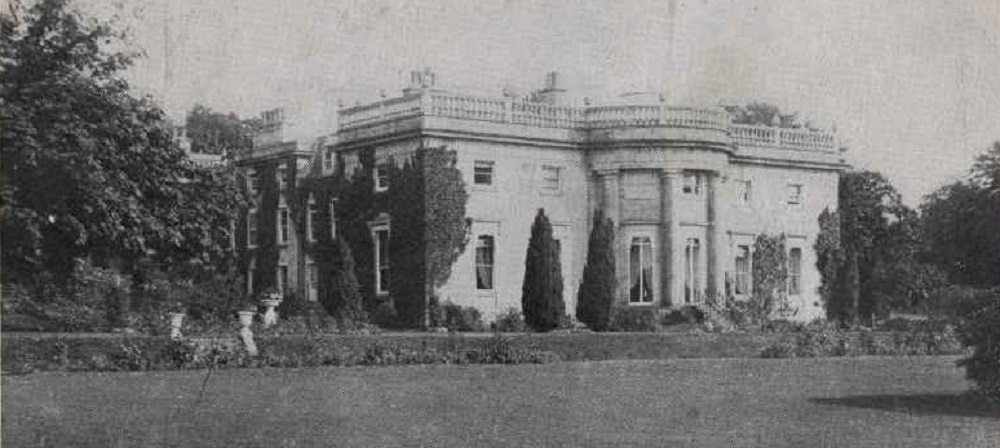
Over a period of almost 200 years, the Russel family transformed the Aden estate. The first Laird, Alexander Russel of Montcoffer (died 1798), re-organised his tenant farms, planted woods for shelter, and built a modest house overlooking the South Ugie. The second Laird, Alexander Russel(l) (died 1829), was responsible for the creation of the rare semi-circular farm steading, built around 1800. During his ownership the family’s surname changed from ‘Russel’ to ‘Russell’. The fourth Laird, James Russell (1797-1875), enlarged the mansion house, commissioning the influential Scottish architect John Smith (1781-1852).

Aden Mansion House ground floor plan showing phases
During the First World War, spiralling maintenance costs combined with falling farm income became a growing burden for the Russell family. Eventually the estate’s financial problems became overwhelming. In 1937 Sidney Russell, the eighth and last Laird, was forced to sell the mansion house and policies, most of Old Deer and 52 tenant farms.
New owners used the Aden estate mainly for shooting while the home farm and policies were let to local farmers. Without the Russell family and its staff to lavish care on the estate, the grounds were neglected and the buildings became derelict.
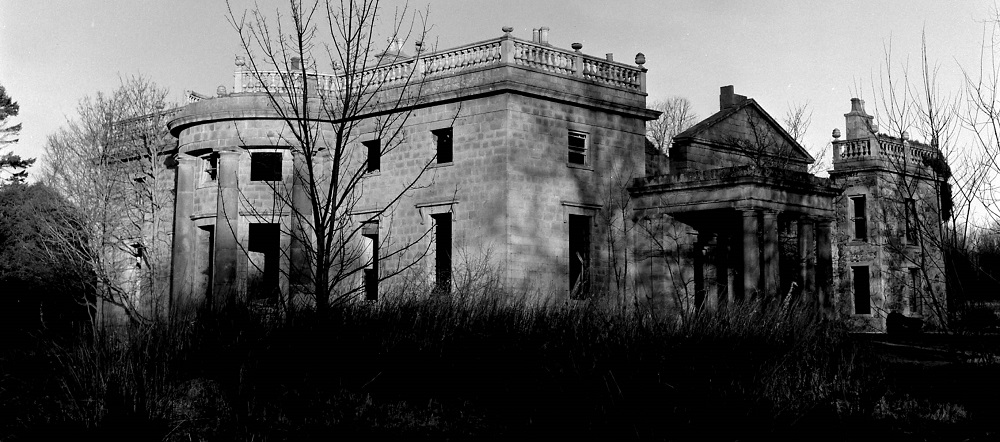
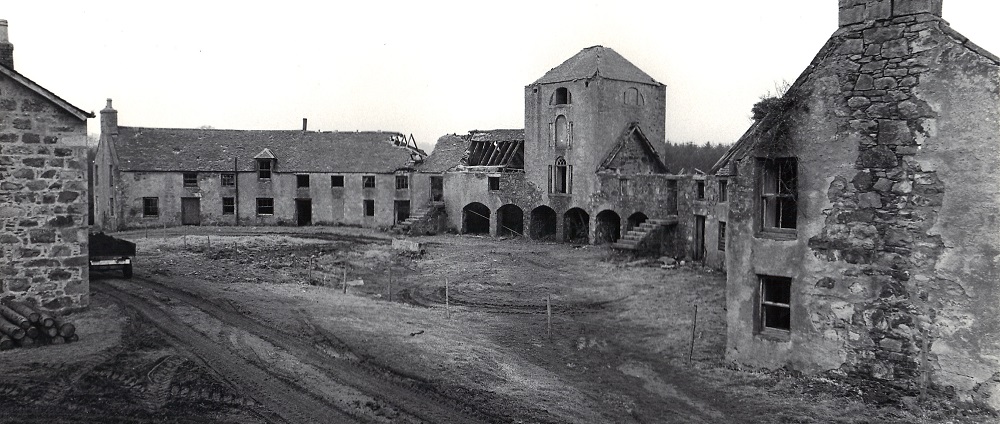
Neglected Mansion House and Farm Steading buildings c1970
In 1975 Banff and Buchan District Council, with considerable support from the Countryside Commission for Scotland, set about reversing this decline. By 1983 the mansion house was consolidated and the steading was converted into the Aberdeenshire Farming Museum.
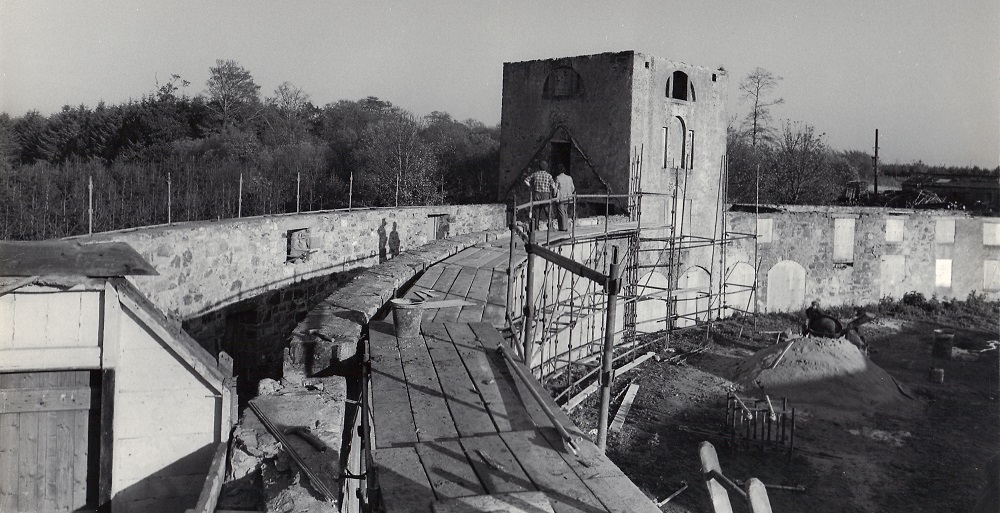
Restoration works on Farm Steading buildings c1980
In July 2015, Aberdeenshire Council Archaeology Service commissioned Murray Archaeological Services Ltd to carry out a structural recording study at the Aden Mansion House, including the excavation and recording of the full width of the Entrance Hall, and the re-excavation of the area North of the steps, to help reveal how the steps were supported and whether there was cellarage. In addition, machine dug test pits of the interior of the building were requested, to ensure as far as possible that any other cellared areas were fully stabilised.
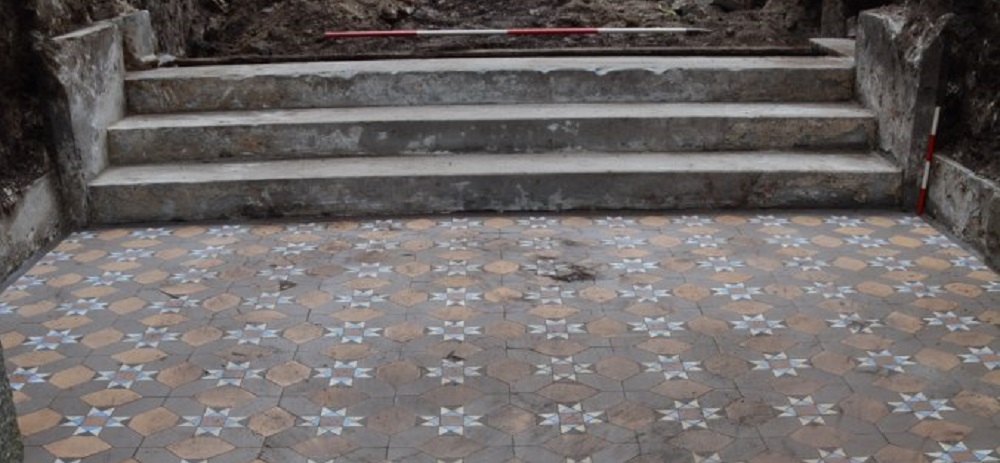
Entrance Hall well-preserved floor of geometric pattern tiles
During the excavation of this Entrance Hall a well-preserved floor of geometric pattern tiles, extending the full width of the hall and into the window bay was discovered. Historic Scotland’s Guide to ceramic floor tiles (Curtis, 2007) suggests that ceramic tiles became common in Scotland from c1840. Thompson (2004) dates the use of such floors as becoming popular in public buildings, churches, and large houses from the 1860s, spreading more generally from the 1890s. The fairly plain geometric pattern, lacking any decorated (encaustic) tiles is hard to date with any precision. If these sources are accepted for the dating of the tiles, it may suggest that the tiles date to the mid-19th century, possibly indicating a re-flooring that post-dated the Aberdeen architect John Smith alterations from 1832.

Old Pantry Test Pit 3 (TP3) indicating cellarage
In terms of cellarage, the excavation showed a clear indication of cellarage to at least 1.5m below the 19th-century floor level in the area North of Step 5 in the Entrance Hall. This cellarage is likely to be of 18th century date as the arch below the West side of this area is an integral part of a wall thought to be of 18th-century date.
From the machine dug test pits, one test pit (TP3) indicated that there had been some cellarage in the area of the Old Pantry, but no evidence of cellars was found in the central area (TP2) or in the North side (TP1).
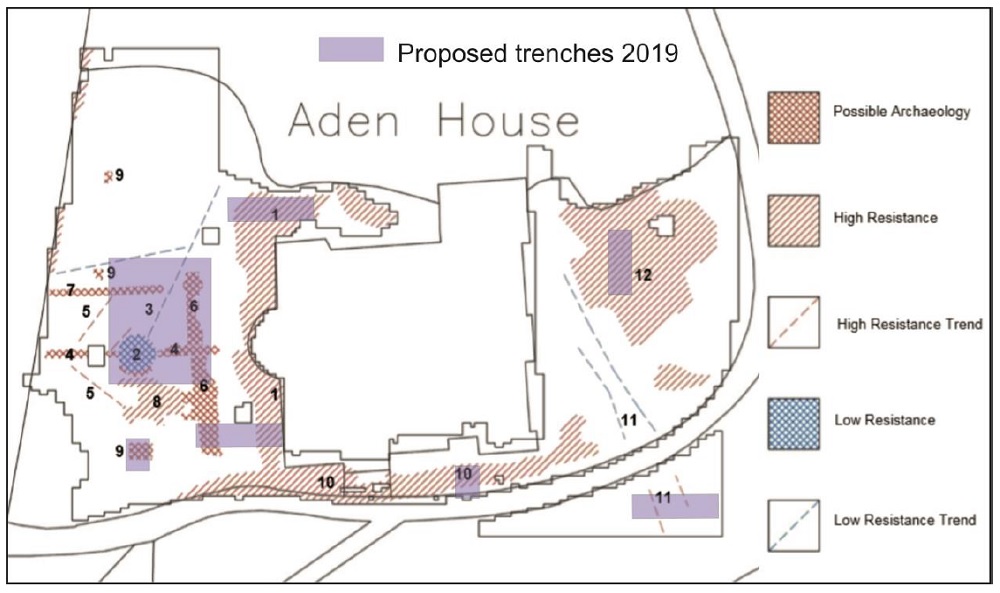
Interpretation of resistivity survey results (Rose Geophysical Consultants) with proposed trenches
In 2019 a further archaeological dig was undertaken by Cameron Archaeology, to explore the grounds surrounding the Mansion House. Twenty trenches were excavated as part of the dig, mainly targeting geophysical anomalies (highlighted through the 2017 geophysical survey) investigating the current mansion and searching for evidence of earlier structures.

A series of stone-lined drains was investigated; the current Council staff were aware of the West end of these beside the river but their orientation and location suggest that they may be contemporary with the mid-18th Century building campaign by Alexander Russel.
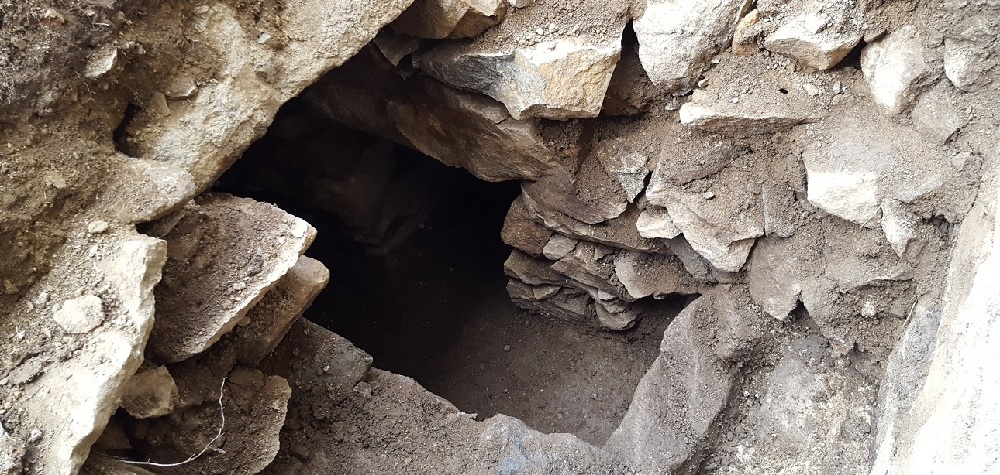
Stone-lined drains discovered during the dig
The late 19th-century concrete pond and fountain base was investigated as well as areas of the garden. Unfortunately, apart from the pond and fountain base, little other information was determined about the garden which appears to have been mainly lawn, flower beds and trees, with areas of gravel surfaces.

First Edition OS map showing garden layout (copyright National Library of Scotland)
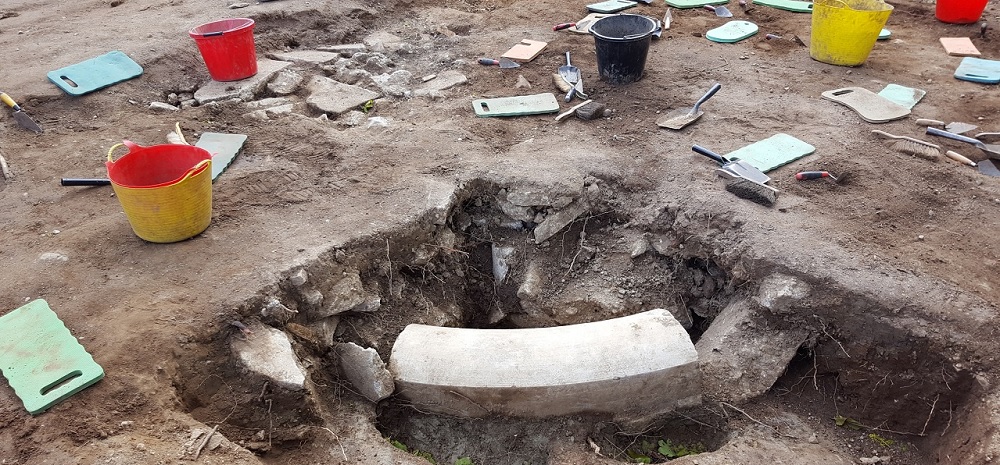
Late 19th-Century concrete pond and fountain base
The current house ruin was also investigated during the dig, and an earlier structure identified on the North side of the house. Stepped foundations may be an earlier phase of building, but it has not been determined whether any of these pre-date the mid-18th Century. Further work on the interior of the building may help to determine this but it has been infilled with meters of rubble for safety reasons and this would not be an easy dig.

Clydebank High School Archaeology Club
Finds from the dig include 18th and 19th century domestic waste including pottery and glass, building material including window glass, brick, ceramic roof furniture, and garden furniture including ceramic garden planters and plant pots, and concrete pond fragments.
Although not confirmed, Peter Buchan Local Historian stated ‘One thing is however fairly certain and, this relates to Aden House. There is evidence to suggest that the present Aden House, was by no means the original house to be built on the site. A serious of underground rooms and passages has led to the suggestion that the present Aden House was in fact built on or near the site of a much older building, perhaps a castle. As the present house was largely built up by the Russell’s it may be that the Keith’s built the original building, although there seems to be no evidence to suggest when it was built or who built it. Evidence has shown it was built on the site of the original Abbey of Deer.’
For further information about the two Aden Mansion House digs, please download the attached Data Structure Reports (DSR) or Summary Reports below, however please be aware that the reports are all large in size and depending on your internet connection, might take a few minutes to download.
It is important to note that the Mansion House research, dig, and Data Structure Report (DSR) has only been made possible with funding support from the National Lottery Heritage Fund (NLHF), Historic Environment Scotland (HES) and support from Aberdeenshire Council itself.
